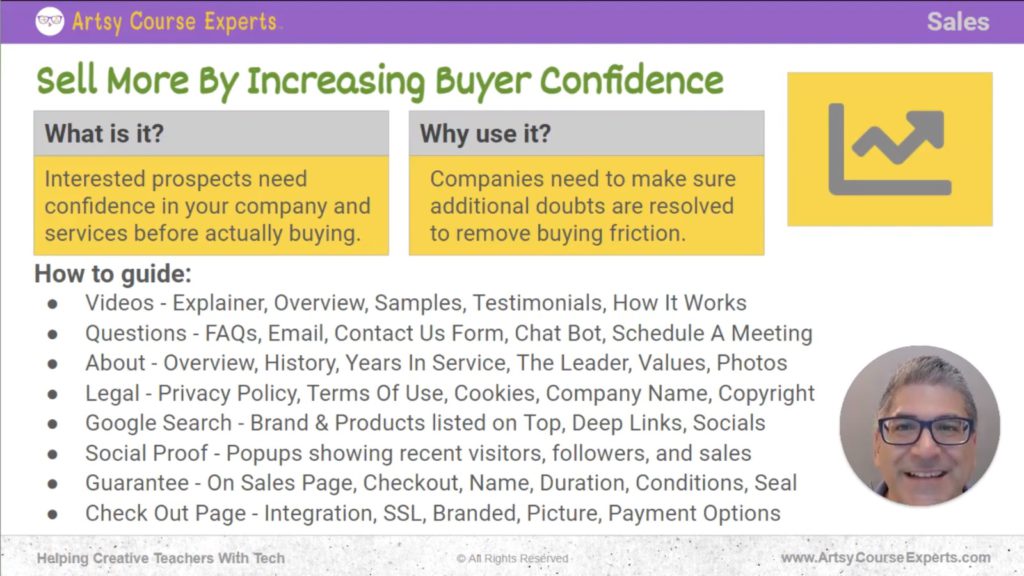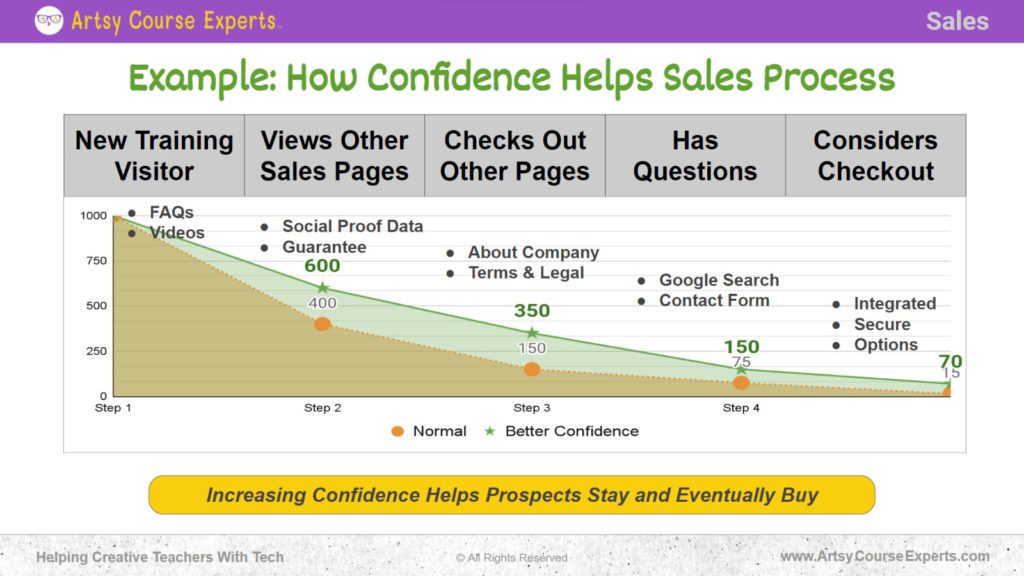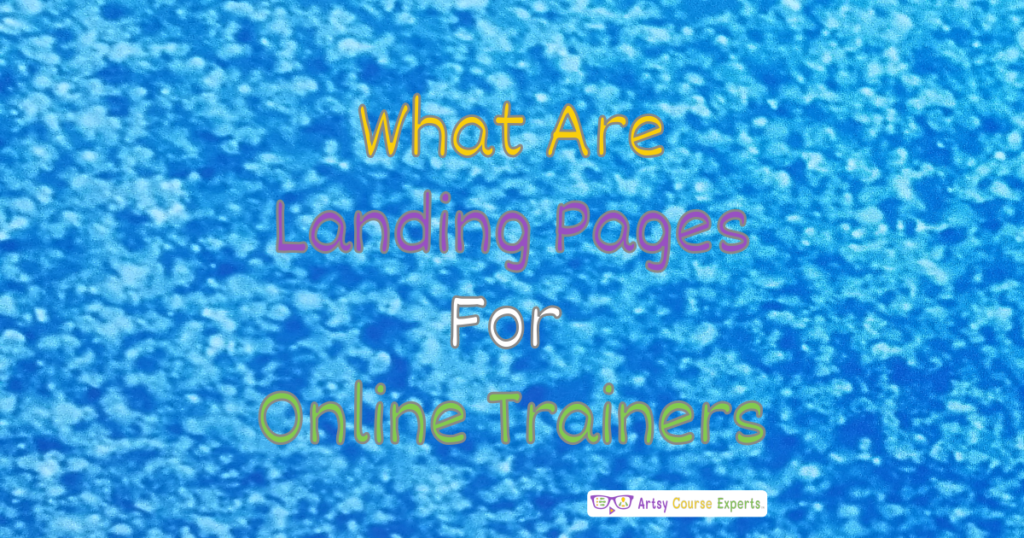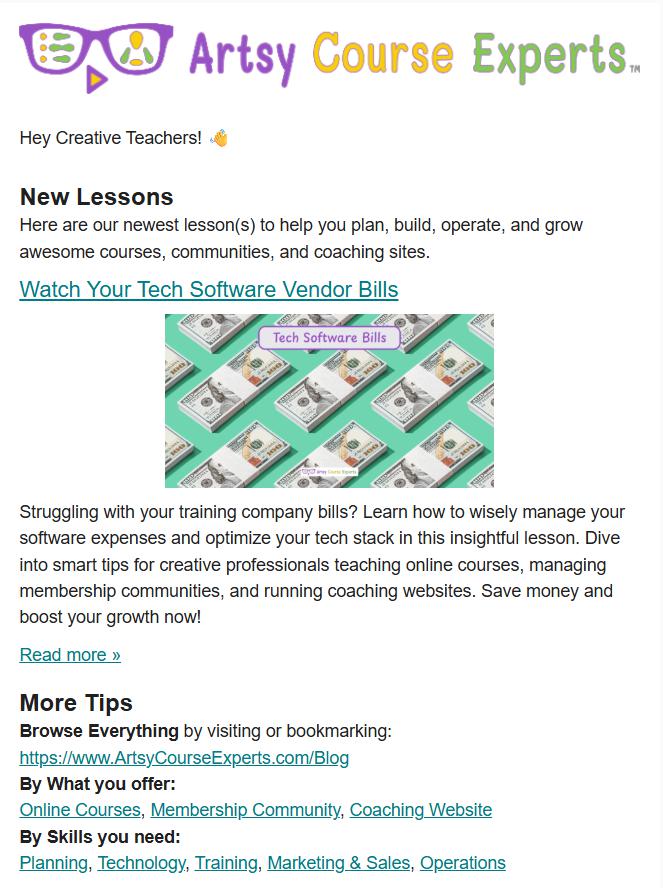Introduction
You may have a good online course and you’re wondering how to increase sales and attract more customers, that is where buyer confidence comes in. Increasing buyer confidence is essential to the success of every business.
In this lesson, we’re learning about selling more by increasing buyer confidence so that you can sell more online courses, community memberships, and even coaching on your online websites.
We’ll be delving into the concept of buyer confidence, understanding its significance, and exploring a comprehensive guide that outlines various strategies to enhance it. Following that, we’ll examine a practical example and conclude by summarizing our top tips.
Challenges online course creators can face if they don’t increase their buyers’ confidence:
- Without buyer confidence, online course creators may struggle to attract enough students to enroll in their courses.
- It can lead to increased refund requests caused by unsatisfied purchases.
- Without trust, learners are less likely to return for additional courses or recommend them to others.
- It can result in negative reviews, deterring potential students from enrolling.
- Online course creators may face stagnant or slow growth in their businesses due to the inability to convert interested visitors into paying customers.
Video Lesson – How To Sell More Online Courses, Community Memberships and even Coaching on your Online Websites
Who Can Use?
Almost any teacher, professional, or coach can use increased buyer confidence to attract more students for their online courses.
- To gain more enrollments for their courses on creating stylish clothing and accessories.
- To find more students interested in mastering the art of effective advertising and marketing.
- To grow their audience for courses on successful blogging, offering valuable insights and strategies to aspiring writers.
This can work for educational businesses like fashion designers, advertisers, bloggers, and culinary designers.
What Is It
Buyer Confidence refers to a person’s trust and belief that a product, service, or company will meet their expectations and deliver value for their money. It’s like having faith that what you’re buying will work well or satisfy your needs, which encourages you to proceed with the purchase without worry or hesitation.
Interested prospects visit your property, which could be your course, community, or coaching website. They’ve shown interest, found you, and want to learn more. However, they need confidence in your company and services before making a purchase. So, at a high level, that’s what they’re seeking, but they must be fully convinced that you’re the right vendor to provide these services and that you appear legitimate. That’s the essence of buyer confidence.
Why Use It?
Building buyer confidence is important for businesses because it helps attract and retain customers. As a training service provider, you need to ensure that any doubts prospects have are resolved. This way, you can eliminate any obstacles to their purchase decision.
You may have the right offerings, and claim to deliver the desired results, the transformation, and the solution these students need. Still, a few small factors must align. By increasing buyer confidence, you’ll ensure all those other details fall into place.
When you walk into a store, they might have the product you’re seeking, but if the place seems shady or suspicious like they’re just trying to sell you things, you might hesitate and consider not making a purchase there. Instead, you might look for another provider.

How To Guide
Let’s consider how you can increase buyer confidence on your various sales pages.
Videos
Videos are excellent; they go beyond words. You can use explainer videos, offer overviews of your services, provide samples, such as course lessons, and include brief snippets. Testimonial videos are effective, and you can even create videos explaining how your services work when clients start working with you. These videos typically outline the three essential steps. Videos add a genuine touch that words alone can’t match, making them a potent way to boost buyer confidence.
Questions
Effective sales pages should feature FAQs (Frequently Asked Questions). However, your prospects might have additional queries, so you need to ensure they can easily get the answers they seek. Demonstrating your online presence and accessibility is vital. Consider including your email address (e.g., info@yourwebsite.com) on your web page. Incorporate a contact form for course-related inquiries, implement a chatbot, or provide access to a real support team.
If your company is sizable, you might even offer a way for them to schedule a meeting with you or your team, using a straightforward online widget to arrange a brief 15-minute consultation.
About
Next, it’s crucial to have a robust “About” page. This page should offer an overview of your company, introduce your team, and provide insights into your history, including how long you’ve been in operation. Highlight the key figures, such as the main teacher or community leader, and explain the core values your company upholds. Including photos of your team, yourself, and satisfied customers or logos adds depth to your About page.
Understand that visitors typically start on your sales page, but as doubts arise, they may navigate to your About page to learn more about your team and ensure they’re the right fit for their journey or problem.
Legal
Additionally, don’t overlook the importance of legal pages. Ensure you have a privacy policy and handle cookies correctly, especially if you operate internationally and need to comply with GDPR. Craft easily understandable terms of use for accessing your course. Clarify limitations, duration, and consequences if payments cease.
Ensure your legal documents are user-friendly with clear section headers, even if some parts may legally claim that they don’t apply. This approach makes it much easier for users to digest the content.
Furthermore, verify that your footer includes the company name and copyright information. Ensure consistency between your domain, company name, and the words used in your legal pages. Everything should align seamlessly. Inconsistencies, such as multiple companies owning one entity or different branding can raise suspicions.
Buyers should feel confident that the landing page, services, courses, community, and coaching are all under the same reputable company brand, ideally with alignment with the owner or lead teacher. This alignment fosters trust and assures buyers that they’re dealing with a quality company.
Google Search
As visitors browse your website, they might open another tab and search for you on Google. They might have found you through an ad or stumbled upon your content in a blog. Initially seeking a solution, they found your blog and then discovered your additional services. Thinking it could be beneficial, they might pause, open a new tab, and search for your company or your name on Google.
It’s essential to ensure that your Google search results are clean and optimized for good SEO. This includes having proper metadata, deep links, and consistent branding across your social media profiles.
While it can be challenging to secure vanity URLs for every company, having links and posts connecting everything forms a cohesive web of information. All of these elements should work together to build trust with your potential buyers.
Social Proof
Testimonials are valuable, and you may already have a few. You might even have a button that leads to a dedicated page filled with more testimonials. Video testimonials can enhance your credibility further. In addition to traditional testimonials, there are other ways to demonstrate genuine social proof, such as displaying reviews or ratings. You could even employ pop-ups that showcase the number of recent visitors, community members, or customers.
As visitors navigate your sales pages, these pop-ups can provide reassurance that others are actively engaging with your offerings. This not only creates a sense of urgency (FOMO – Fear of Missing Out) but also boosts confidence by showing that your website is lively and attracting real customers.
Guarantee
While you might have a guarantee featured on some of your sales pages, it’s also wise to consider including a guarantee at the checkout stage. This way, when customers are about to enter their credit card information, they encounter your guarantee. Give your guarantee a specific name; don’t settle for a generic “guarantee.” For example, you could use “Happy Student Guarantee” or “Designer Training Guarantee,” adding a unique touch. Provide details in your guarantee, such as its duration and under what conditions it applies (e.g., 50% or 100% money-back). Including a visually appealing seal or logo can further instill confidence.
Additionally, consider linking to a more detailed guarantee page with a few paragraphs, demonstrating your commitment as a legitimate company and encouraging prospects to take a chance on you.
Checkout Page
To enhance customer confidence, scrutinize your checkout process. Customers may check out even if they’re not immediately ready to make a purchase. Ensure integration; the checkout should seamlessly function on your website rather than opening a new tab or redirecting to another website. The checkout page should display the lock icon, indicating SSL and HTTPS for security. Maintain consistent branding, including colors, logos, product images, and names. If you refer to your community with a specific term, ensure it remains consistent on the checkout page; there should be no deviation. Consistency is key.
Lastly, offering a variety of payment options, including major credit cards and popular alternatives like PayPal, reinforces your legitimacy as a real, trustworthy company.

Example: How Confidence Helps the Sales Process
Let’s examine an example. In this scenario, we’ll discuss how confidence plays a crucial role in the sales process. Imagine you have a visitor—a prospective customer. They’re interested, and importantly, they don’t leave your website abruptly.
As they navigate your site, they gain a better understanding of your products and services. Over time, if you provide them with additional information, more of these visitors will remain engaged.
New Training Visitor
First and foremost, you have a new visitor interested in your creative training course, community, or coaching website. They arrive with curiosity, possibly by clicking on an ad or finding your blog through Google. This is a positive start. As they explore your site, many visitors tend to leave at this stage, either because it doesn’t meet their expectations or because they confuse it with something else.
Some visitors may skim your content for about 60 seconds before moving on, while others might stay longer, investing two or three minutes reading your blog. Some may even venture further by clicking on your services. At this point, they scrutinize your main offer, examining its features, target audience, and more. This initial assessment could be sufficient, or you may need to provide additional sales information.
To enhance their confidence, you’ll include extra details like explaining the customer journey or highlighting the consequences of not taking your course, such as remaining in the same job without acquiring new skills. You’ll address potential questions through FAQs and incorporate videos. As a result, visitors spend more time on your sales pages, becoming actively engaged. This engagement is key to keeping them on your site. Without these elements, most visitors would start leaving in less than a minute.
If you’re managing a community, members can quickly log in. Once they’ve logged in and selected their main chat room, the next time they open their browser and access the membership site, they see their main room, settings, and notifications about new messages. This seamless experience is made possible by cookies.
Imagine if every time you logged into a community, you started from scratch, not remembering your favorite rooms, active rooms, sorting preferences, muted rooms, or favorite rooms. It wouldn’t know anything about you, resulting in a poor experience. Cookies play a crucial role in getting your community members back in and engaged, seamlessly continuing from where they left off.
Websites – Remember Layout, Language, Ads, and Shopping Cart Items
If you have a teaching or coaching website, cookies can be a valuable tool. They can assist in determining the screen layout, your language preferences for viewing the website, and even help with ad preferences. Some ads, though not part of your website, use cookies to tailor their content based on user preferences.
If you operate a shopping cart on your website, cookies help remember what items are in the cart as customers browse through your products. This allows for a smooth shopping experience as users move from page to page or explore different resources.
Furthermore, if a customer doesn’t make a purchase today but returns next week after receiving a newsletter, the website can remember the items added to the shopping cart. This convenient feature is made possible by cookies. It’s worth noting that while many find this feature useful, some users may choose to disable cookies on your website.
Views Other Sales Pages
Next, let’s consider the scenario where visitors land on your advertising landing page. They’ve entered your website through this specific landing or sales page, and now they’re interested. They might proceed to click on other sales pages to gather more information.
For instance, suppose there were only one or two testimonials on your homepage. In that case, they might click on another link to access a page with all the testimonials or more client reviews.
Additionally, they could begin examining social proof. Perhaps a small pop-up notification appears, saying something like, “10 musicians purchased our course yesterday.” As they navigate through various sales pages, they might encounter a guarantee section. This section may provide more detailed information, which may or may not have been present on the initial homepage. It’s crucial to remember that your prospects arrive from different entry points—blogs, Google searches, ads, and various sources.
These visitors are already interested in what you offer; now, they are seeking confirmation and building confidence. Therefore, they’ll want to explore the guarantee. For instance, they want to know if your product will work for them and whether they can obtain a refund if it doesn’t. They’re interested in the refund amount, the duration, and the steps involved if a refund is necessary. They actively seek this information, so you should ensure it’s readily available on your website for them to find.
Checks Out Other Pages
These potential buyers have shown interest in your offer—your course, community, or coaching. Everything sounds promising, but they fall into the category of customers who consider this a significant investment. They want to make an informed decision, so they’re inquisitive. They’ll click on the “About” page, scrutinize the footer, examine the terms of use and legal information, and look for copyright details.
They might also seek a picture of the main teacher or owner, and investigate your company’s history—how long you’ve been in operation. They aim to ensure that everything aligns, confirming it’s not a scam and that it maintains consistency. Given the vast amount of online content, they need to feel confident before parting with their money, whether it’s a one-time purchase or a recurring subscription. They are cautious because they want assurance as they explore various sections of your course, community, or website.
Has Questions
At this stage, they might go back and forth. They could revisit the sales page to gather more information or realize they have questions. It’s important to note that at each point in this process, some potential customers drop off and don’t return. Your goal is to retain more of them by instilling extra confidence.
When they have questions, do you provide a convenient contact form? They might perform a Google search to inquire about your course or community to see what information surfaces and if it appears trustworthy. If they do have questions, they may prefer various communication channels. Some might want to call, while others opt for email. They may ask questions related to course features, Q&A with the coach, or portfolio reviews, among others.
These questions offer insights that you, as a business, can use to improve FAQs and benefits sections. Over time, if there are unanswered questions, you should offer prospects an opportunity to get answers rather than losing them. If they realize there’s a way to engage with your team, it’s much more likely that they’ll stay engaged and eventually become customers.
Considers Checkout
You’ve managed to retain these potential customers, and finally, they reach the stage of considering your checkout. They evaluate the situation, thinking, “Everything looks good; let’s proceed to checkout.” They may even click the “Buy” button just to take a peek. They want to ensure that the checkout process is branded, smooth, swift, and secure, and offers convenient payment options like PayPal. All these elements working together instill the confidence needed.
Let’s consider this with a hypothetical scenario: Suppose you receive a thousand visitors. If you lack the necessary confidence factors, a significant number of people will begin to drop off along the way. Consequently, at the very end of the sales funnel, you’ll likely have a much smaller group of individuals who complete the purchase.
Conversely, when you provide confidence throughout the process, fewer and fewer people will leave your “property” as they explore your offerings. Consequently, at the end of your sales funnel, you’ll achieve higher sales numbers because you’ve instilled confidence in these prospects.
Everything aligns—this is a legitimate company, a reputable trainer, showcasing credentials, past achievements, and how others have successfully embarked on a similar journey and achieved their goals. You’ve proven your ability to help these prospects follow the same path to achieve their goals.
Frequently Asked Questions About How to Sell More By Increasing Buyer Confidence

Summary – Sell More By Increasing Buyer Confidence
The key to selling more online lies in making your potential customers feel sure about their choices. When they trust your product or service, they’re more likely to buy. To achieve this, use videos, provide clear guarantees, and ensure a smooth and secure checkout process. Don’t forget the “About” page; it adds trust.
Reducing the number of people who leave without buying is necessary for success. When buyers trust you, they buy, stay happy, and might even bring more customers your way.
Tips for creative online course teachers when trying to sell more by increasing Buyer Confidence:
- Consider having multiple sales pages tailored to different aspects of your offerings.
- An “About” page adds credibility by providing information about your company and the teacher, complementing the sales page and teacher bio.
- Employ tools like videos and social proof to engage and reassure potential buyers.
- Be explicit about your guarantee, and consider providing more detailed information on a separate page if necessary.
- Ensure that your checkout process aligns with your company’s branding, colors, and product details, even if you use a third-party payment processor.
You should be a little smarter now. Thanks for hanging out!
Please subscribe to get more tips for creative online course teachers.
More Tips For Online Teachers
These lessons can also help you with Operations and Technology:
- Using Browser Cookies for Online Trainers
- Artificial Intelligence Tools for Online Course Creators
- Creating an Ad for Your Online Course
- PPC Ads for Creative Teachers
- Understanding Your Ideal Target Audience For Online Course Teachers










